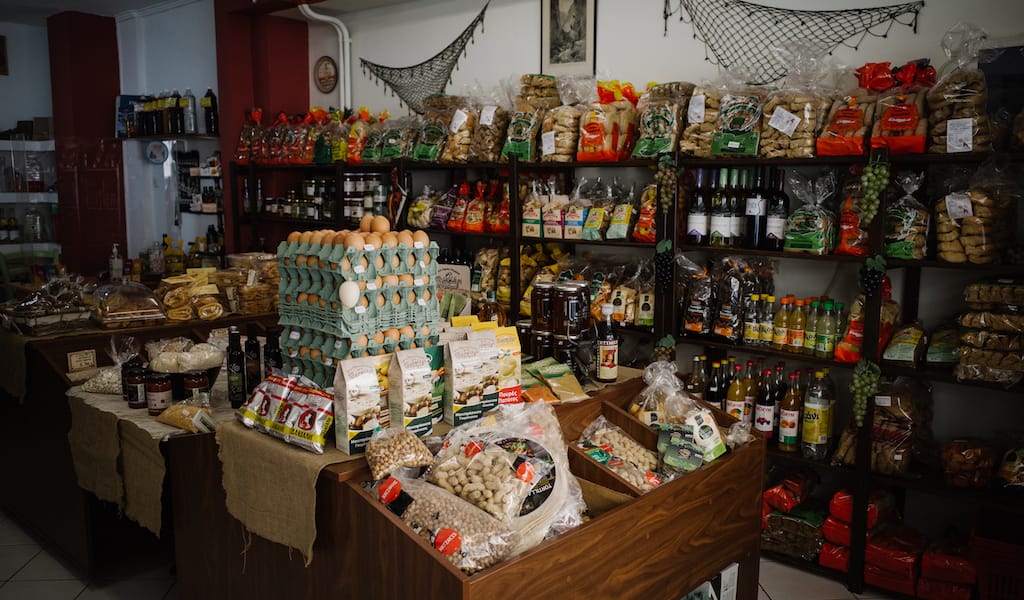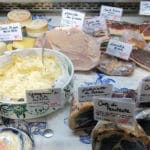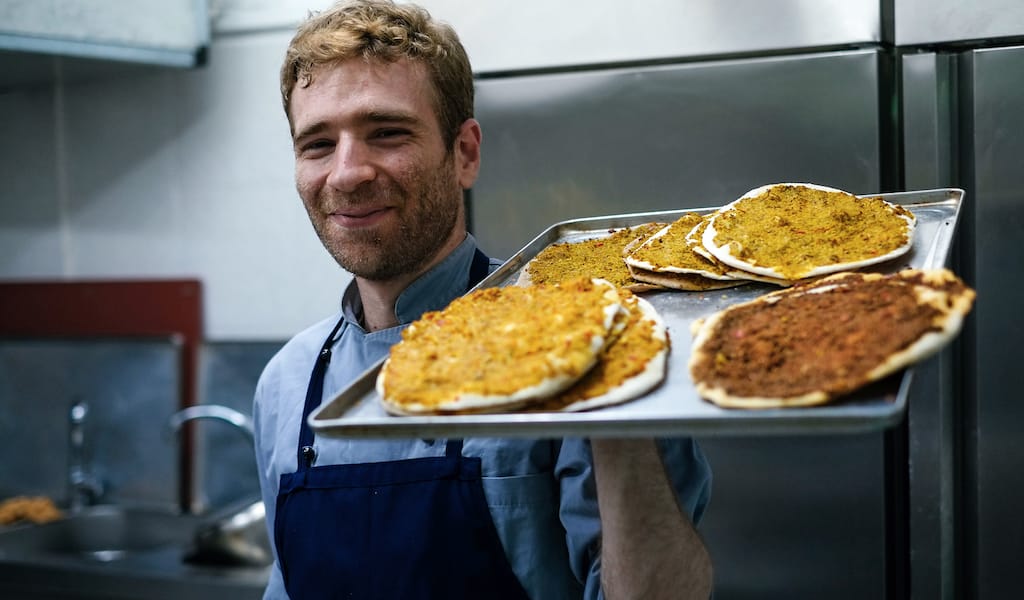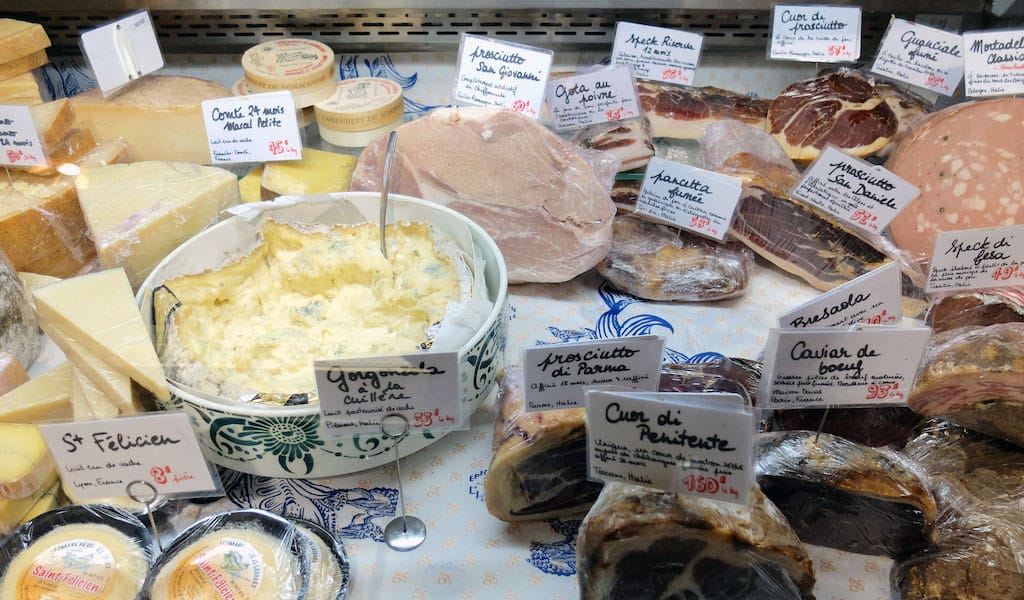On Crete, endowed with fertile soil and an enviable climate, devotion to the island’s culinary traditions runs deep. This is even the case for people who have family ties to Crete but did not live there themselves, like Dimitris Katakis, who runs To Mitato tou Psiloriti, a small Cretan deli in Athens.
In 1950 his grandparents left Crete, despite their great love for their native island, to go to Athens for better job opportunities – the postwar era saw many Greeks move to cities or even abroad in search of a better life. Yet the flavors and traditions of Crete, one of the southernmost points in Europe and the largest island in Greece, stayed with them and were lovingly passed on to their children and grandchildren.
In 1992, Dimitris’ parents, in an effort spearheaded by his mother, Clio Bali, opened a Cretan deli in Ambelokipi, the neighborhood where Clio grew up and which is known for its large Cretan population. She named it To Mitato tou Psiloriti – mitato is the term used on the Cyclades, mostly on Crete, for a small mountain hut used by shepherds (and that sometimes functioned as an informal cheesemaking workshop, at least in olden times). There are plenty of them on Mount Psiloritis, the highest peak in Crete and the place where, according to mythology, Zeus grew up.
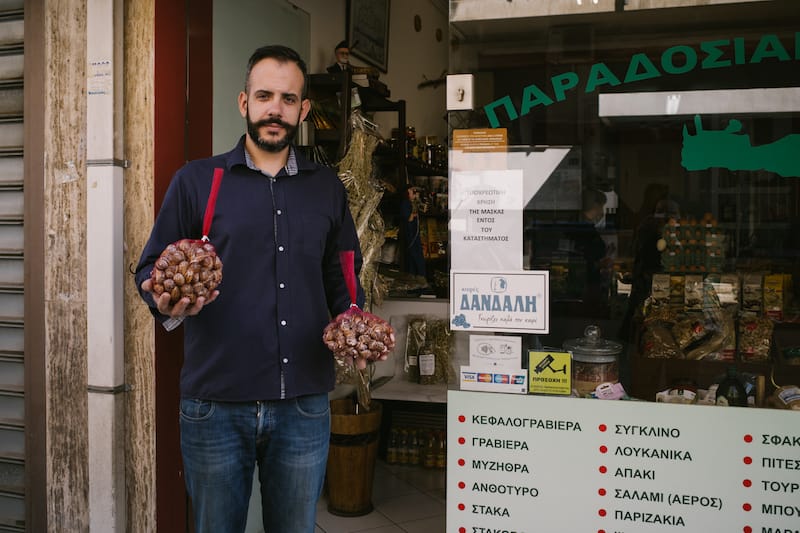
Now in his early 30s, Dimitris grew up in the shop, helping his mom and becoming closely acquainted with the flavors and culinary secrets of Crete from an early age. Clio alone chose the products for the first 15 years; after that, she did it with the help of Dimitris, who had become a bona fide expert. “He always knew more than me,” she tells us with pride (you can still find her hanging around the shop). Around this time, Dimitris discovered a passion for cooking. He got a butcher’s training diploma and later graduated from the Merchant Navy school, which allowed him to travel around the world and taste different foods. Yet he couldn’t stay away from Greece. After returning back to base, he decided take over the shop that he loved so much.
Considered by some as the original Mediterranean diet, Cretan cuisine is simple, seasonal and relies largely on three star ingredients: grains, olive oil and wine. Fruit and vegetables, legumes, fish, poultry, eggs and dairy also play an important role, while red meat and sugars are consumed in smaller amounts. This philosophy around food and diet has remarkably survived over the centuries, likely because it is passed down with a strong sense of tradition and pride.
[The shop] also offers a form of travel, bringing you as close to Crete and its culinary culture as you can get without leaving the city.
This small, simple shop in a densely built area in central Athens is imbued with that sense of tradition and pride – it also offers a form of travel, bringing you as close to Crete and its culinary culture as you can get without leaving the city. The products are carefully selected, and occasionally Dimitris will go to Crete to find new items. Currently they offer a great selection of traditional types of pasta and grains like striftaria, trahana and xinohontro, Cretan couscous and cracked wheat, rusks, snails, pulses, olives and olive oil, vine leaves, vinegars and other staples of the Cretan diet.
We’re particularly enamored with the many culinary herbs and botanical teas that they stock. Around 2,000 edible plants and herbs grow wild in Crete, 160 of which are native to the island. An important part of the Cretan diet is the wide use of herbs, both in food and also as remedies. Here, among many herbs and spices, you will find malotira (“mountain tea”) and dictamo (Origanum dictamnus, or the dittany of Crete), a highly medicinal herb. Upon request they will ship over rare wild greens like stamnagathi, and wild artichokes, when in season.
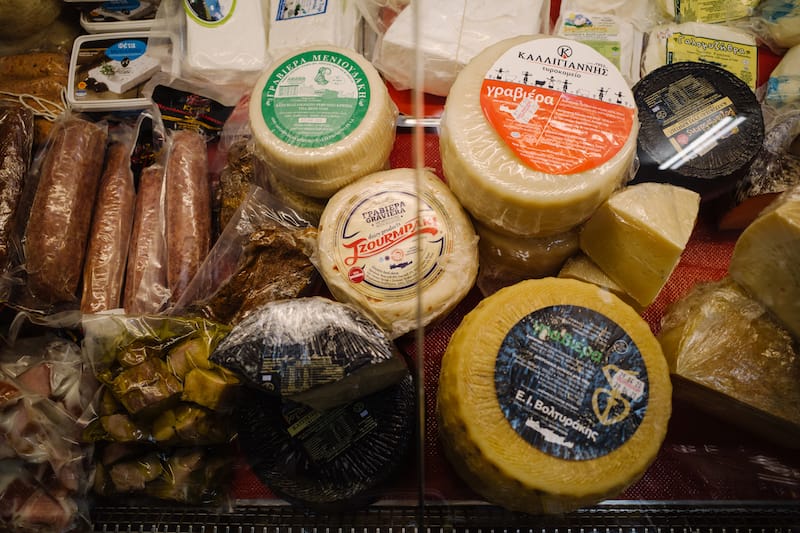
Among the reasons why people come to this little shop from all corners of Athens is the glass case fridge that greets you as you enter the shop. It’s packed with cured meats and, of course, amazing dairy products. You’ll find different kinds of Cretan sausages and salami – all artisanal – like the spicy beef salami and the goat salami, both made by the same producer in Chania. There’s the Cretan delicacy apaki, vinegar-cured pork tenderloin that is then smoked with local herbs like rosemary, thyme and oregano; here you can also find it made of chicken. Xidato loukaniko is another specialty of Crete, and the version they stock is fantastic. It’s a pork sausage made with whole chunks of meat rather than mince and has a slightly tangy flavor from the vinegar in which the meat is cured for a couple of days before being made into a sausage. The smoked pork steaks, which are vacuum-packed individually, are also popular.
Given Dimitris’ expertise, it’s no surprise that the cheeses are all fabulous. Some are fresh and creamy like galotyri and xynomyzithra while others are hard and aged in different ways like the famous Cretan graviera and kefalotyri. Among our favorites are the two-year aged sheep and goat milk graviera with thyme from Heraklion, the smoked graviera, and the 18-month aged kefalograviera, which is great for grating over pasta dishes. The shop is also where we source our fresh sweet myzithra and dried athotyro (similar to ricotta salata).
Every Friday, Dimitris gets in an order of fresh chickens, roosters, eggs and organic beef shipped straight from a traditional farm in Rethymno. They are usually sold out on the same day, so it’s best to order ahead. We also love their variety of natural sea salt, especially the fleur de sel from Gavdos, a tiny island just south of Crete, and the one from Kissamos, in western Crete, that comes unpackaged and is sold by the kilo. Their freezer is full of rare goodies – handmade Cretan savory pies like fennel pie, zucchini blossoms stuffed with rice and herbs, cheese pie from Sfakia (a village near Chania) and Chaniotiki tourta, a lamb (or goat) pie from Chania that is traditionally eaten during Easter. As for desserts, the freezer also contains lychnarakia from the town of Ierapetra, a delicious sweet treat that is the size of a cupcake and made with fresh cheese.
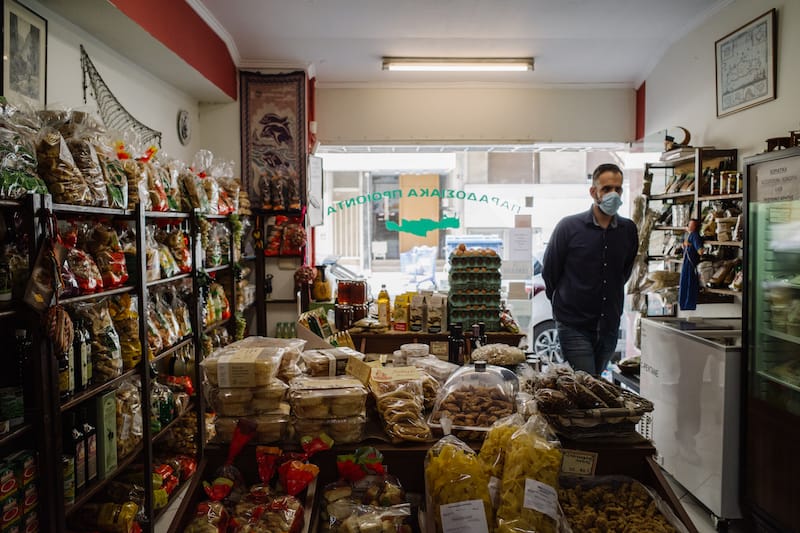
Last but certainly not least, the shop also carries Cretan wines like marouvas (red) and vidiano (white) and, of course, the most beloved drink of Crete, tsikoudia (Cretan-style grappa).
Most importantly, a visit to the shop means that you’ll get to meet Dimitris and discover his passion for the products he sells and his love for this little shop that his mother set up. He’ll not only greet you with kindness but also happily explain each product in the store and how to use it. In the near future, he plans to renovate the physical building and get an online shop up and running so that he can spread the gospel of Cretan cuisine to an even wider audience.
This article was originally published on October 14, 2020.
Published on October 23, 2023
Related stories
March 16, 2022
AthensQuick Bite: On this afternoon food tour of Exarchia, we’ll explore this vibrant neighborhood’s roots in political activism but also investigate why it is also home to some of the city's best eats. This 6-hour tour includes more than a dozen essential bites, sips and stops that illustrate the history and culture of this iconic…
May 14, 2021
AthensQuick bite: On this 5½-hour food tour, we will explore the culinary backstreets and secrets of downtown Athens, in search of the soul of this historic yet always vibrant city. From downtown Athens, one’s eyes rest on the timeless vision of the Acropolis up on the hill, looming grandly above this ancient Greek city. But…
July 1, 2020
MarseilleWhen épiceries first set up shop in France in the Middle Ages, they predominantly sold spices – les épices, as their name implies. In the 19th century, they added foodstuffs on their shelves, evolving into magasins d’alimentation générale. Some of these general stores are North African-owned corner shops. Open 24/7, they play an indispensable, yet…







































